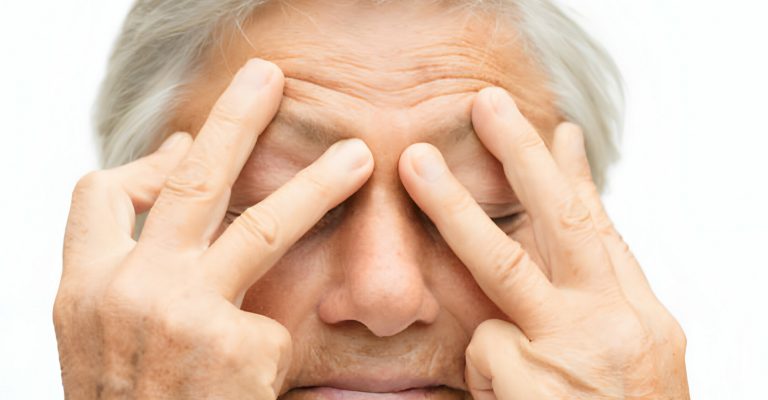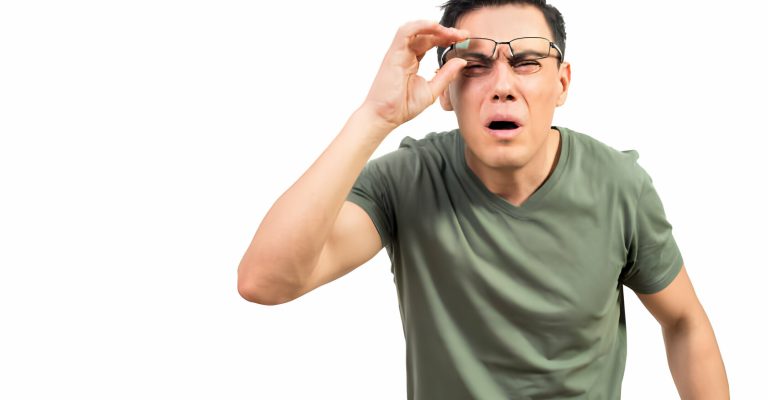A stroke can damage the parts of the brain responsible for vision, leaving people with visual field defects and impairments of the eyes’ ability to work together. But there are ways to restore vision after a stroke, and eye exercises are one of the most effective methods.
In this blog post, we’ll introduce 6 simple and engaging eye exercises to help you regain your vision after a stroke. Whether you’re a stroke survivor looking to improve your quality of life or a caregiver seeking ways to help someone you love, these exercises can be game-changers.
How Does a Stroke Affect Vision?
When someone experiences a stroke, it means the blood flow in their brain isn’t working the way it should. This can cause damage to parts of their brain, depending on which areas are affected.
Now, when it comes to vision, it’s not just the occipital lobe that’s involved — other parts of the brain, like the parietal lobe, cerebellum, and brainstem, also play a role. So, if a stroke damages any of these areas (or others), it can lead to changes in how someone sees the world.
To understand this better, let’s break down what goes into seeing something. There are two main components:
- First, oculomotor skills refer to how our eyes move and adjust to focus on what we’re looking at. Think of it like a camera lens — if it’s not pointed in the right direction or if it’s not focused correctly, you won’t get the picture you want.
- Second, there are visual perceptual skills — this is where the brain comes in. It’s responsible for processing all the information coming in from our eyes and making sense of it. This is a complex process that involves a lot of different areas of the brain working together.
So, when someone has a stroke that affects their vision, it can impact one or both of these components. For example, they might have trouble moving their eyes to focus properly, or they might not be able to interpret what they’re seeing correctly. This can affect everything from their ability to read to their depth perception.
Eye’s Condition Post Stroke

When someone suffers a stroke, they may experience changes in their vision depending on the severity of the damage and the area(s) of the brain impacted. In particular, if their oculomotor skills – which govern eye movement – are affected, they could experience eye movement disorders that include nystagmus (involuntary rapid eye movements), strabismus (where the eyes are misaligned), or diplopia (double vision).
Visual perceptual skills are also affected in stroke survivors, with hemineglect being a common example of this. This is where a person is unable to perceive their surroundings on one side of their body, leading them to not be aware of objects or people that are on that side. This can make basic tasks, such as dressing, showering, or even walking through a doorway, much more difficult.
Visual agnosia is another potential condition that can occur when visual perceptual skills are affected. This refers to difficulty recognizing and distinguishing what is being seen, often causing confusion when trying to identify everyday objects.
Do Eye Exercises Really Help?
It’s been scientifically proven that these exercises promote neuroplasticity, which causes your brain to undergo adaptive rewiring. The result is that healthy parts of your brain will take over the damaged areas.
To get the most out of your eye exercises, practicing them repetitively is crucial. Don’t worry if some exercises may feel uncomfortable; it’s natural. However, it’s important to remember that if a movement feels painful, you should stop immediately and consult your physician. And if you need a break, take one, but make sure to resume a little later for optimal results.
Regaining your full vision may not be guaranteed, but many stroke survivors have experienced significant improvement by consistently practicing these eye exercises. So, remember, with patience and dedication, you may be able to recover at least a portion of your vision.

Eye Exercises After Stroke
To regain oculomotor function after a stroke, here are a few of the most beneficial eye exercises:
Tromboning
This activity has a lot to offer regarding improving your visual focus. To start, extend your arm and place your finger at an arm’s length away from your face. Now, with full concentration, move your gaze to your finger and focus on it. Next, gently bring your finger closer to your face while maintaining the visual focus on it.
While doing so, take a deep breath and keep the focus on the finger as you bring it closer and closer to your face. Once it’s close enough, hold your finger in place and exhale. Now, slowly move your finger away while inhaling.
Repeat this process ten times, and while doing so, it’s essential to alternate between extending your finger away from your face and bringing it back in. Picture a trombone slowly being played back and forth; repeat the same movement with your finger but slowly and rhythmically.
Directional Tracking
This activity has a lot to offer regarding improving your visual focus. To start, extend your arm and place your finger at an arm’s length away from your face. Now, with full concentration, move your gaze to your finger and focus on it. Next, gently bring your finger closer to your face while maintaining the visual focus on it.
While doing so, take a deep breath and keep the focus on the finger as you bring it closer and closer to your face. Once it’s close enough, hold your finger in place and exhale. Now, slowly move your finger away while inhaling.
Repeat this process ten times, and while doing so, it’s essential to alternate between extending your finger away from your face and bringing it back in.
Near/Far Focusing
If you’ve experienced a stroke, you may have noticed difficulty with focusing your vision. Rest assured that this is a common side effect of a stroke, and some exercises can help. We’ve got you covered with a simple eye exercise that could help you regain your focus.
To start, extend your arm out in front of you and hold your finger up about an arm’s length away. Next, breathe in while focusing your gaze on the tip of your finger, and then breathe out while shifting your focus beyond your finger into the distance.
Repeat this exercise for a total of 10 times. If you find this exercise challenging at first, don’t worry. Try to find a specific object in the distance to focus on rather than just staring off into the unknown.
Practice this exercise daily, and you may notice improvements in your eye’s focus and flexibility. Don’t hesitate to speak with your doctor if you experience any discomfort or concerns while performing this exercise.
Clock Rotations
In this exercise, you start by fixing your gaze straight ahead. Then, imagine a clock directly in front of your face and look up at 12 o’clock with just your eyes (without moving your head). Hold this position for 3-5 seconds and then return to a relaxed forward gaze, feeling a gentle stretch in your eye muscles.
Next, move your gaze to 1 and 2 o’clock, repeating the process for all the numbers on the clock face. To ensure you accurately shift your gaze, some people who have experienced a stroke find it helpful to have a caregiver or family member hold a pencil at each point on the clock.
Hidden Picture Puzzles
These intriguing games involve searching for small images concealed within a larger picture. It’s a fun and entertaining pastime and an excellent way to boost your visual perceptual skills. Engaging in this activity sharpens your visual memory, form constancy, and figure-ground skills – necessary attributes for successful visual processing.
Moreover, hidden picture puzzles offer more than just an enjoyable game. They provide a means of practicing various directional tracking techniques. For example, you can train yourself to look for the images by scanning the picture side to side or up and down. Such techniques can go a long way in improving your visual capabilities and help overcome limitations you may be facing in that area.
While it’s true that hidden picture puzzles typically come in the form of a sheet of paper, you can extend the same principle to real-life activities such as scavenger hunts or the game of “I-Spy.” Such an approach translates the skills learned in the game to actual practical scenarios, enhancing your visual competence beyond the game setting.
Word or Letter Searches
While most of us know the traditional concept of word searches, there are even more ways to challenge ourselves. Want to target specific letters? Go ahead and limit your search to just those. Want to narrow it down even more? Try searching for only vowels! The possibilities are endless.
But word searches aren’t just a fun game. For stroke survivors or individuals with visual impairments, word searches can be a beneficial tool for rehabilitating their visual field cuts or neglect.
As family members or caregivers, you can better understand the individual’s visual impairments by observing their performance in the activity. If they skip entire sections, it may indicate visual issues on that side. To help them out, simply highlight the edge of the section they missed.
To Sum Up
If you’re a stroke survivor, you might be well aware of the impact it can have on your vision. But did you know that practicing eye exercises could help you regain your vision? Yes, that’s right! Eye exercises can target visual skills, such as oculomotor and visual perceptual skills, and help improve visual ability.
Practicing eye exercises consistently can lead to neuroplasticity, which is responsible for rewiring your brain adaptively. This means that the healthy parts of your brain can take over the functions affected during stroke, ultimately promoting recovery.


